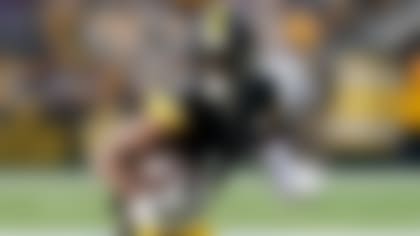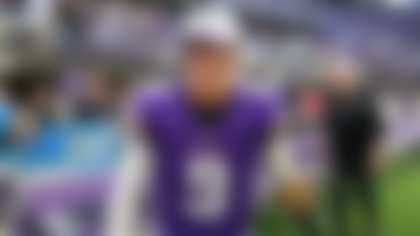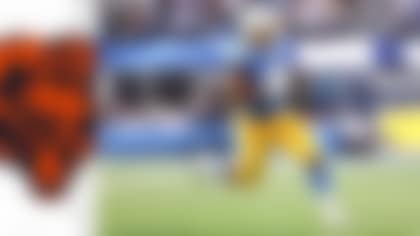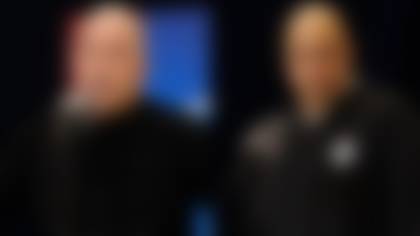To celebrate Super Bowl 50, NFL Media's Elliot Harrison is looking back at each of the 19 Super Bowl rematches on the regular-season schedule in 2015, revisiting the clashes of the past as former Super Sunday opponents square off once again. Today, he recaps a classic showdown from earlier in this decade, Super Bowl XLVI.
This Sunday's rematch: New England Patriots at New York Giants, 4:25 p.m. ET.
Reunites the combatants from: Super Bowl XLII (Giants 17, Patriots 14) and Super Bowl XLVI (Giants 21, Patriots 17).
There are 267 games in an NFL season, well over 1,000 quarters -- and in 2011, no less than 34,037 plays from scrimmage. To think one play would come to define the NFL's 92nd campaign would be a bit far-fetched, right?
Not if you saw what happened at the 12-yard line of Lucas Oil Stadium on Feb. 5, 2012. One snap changed the legacy of a player and his coach, while also helping earn the New York Giants their fourth Lombardi Trophy (and eighth overall NFL championship).
Down 17-15, with 3:46 to play, Eli Manning and his offensive mates had time. They had hope, too, in that being down just two points meant a Lawrence Tynes kick would send them home winners ...
... if No. 12 wasn't hanging out on the other sideline. Tom Brady and trying to protect a one-point lead don't exactly mix like Jack and Coke.
Tom Coughlin's squad needed a touchdown.
But how to start off the drive? That was the question. Specifically, what would offensive coordinator Kevin Gilbride call on first down? Run the ball? The ground game had been decent up to that point, but playing too conservatively would neglect the Giants' best playmakers: Manning and his cadre of wideouts. Unless, of course, the Giants were OK with punting -- i.e., thinking they could flip field position, stop Brady and eventually get the ball back in better standing.
Again, good luck with that.
No, this was the season-defining possession for New York. The G-Men just had to proceed wisely.
A stuffed run on first down would equate to an obvious passing down on second. Obvious passing downs are dangerous when backed up that close to your own end zone. Look no further than earlier in the game, when Brady got hit with an intentional grounding call in his end zone, gift-wrapping the Giants a quick two points. And considering the Giants were in this position late in the fourth quarter -- as opposed to midway through the first -- the stakes were much higher: A sack or turnover could basically end the game. So, maybe being a bit conservative might not have been the worst idea in the world.
Meanwhile, the Patriots were likely to come out in nickel, limiting the opportunities to get mismatches in the passing game should Gilbride choose to get aggressive. Think about it: Manning forces one into coverage, or holds the ball too long because the Pats have more players in the secondary, and New York would be in serious trouble. Think second-and-long or a strip-sack or the worst possible outcome: a game-sealing pick six.
That's what Gilbride had on his plate. That was the decision he was paid to make. That was the place where four decades of coaching preparation met opportunity -- and risk.
What to do, what to do ...
Sure enough, the Patriots came out in nickel, essentially a 4-2-5. Gilbride rolled out receivers Hakeem Nicks, Mario Manningham and Victor Cruz, with H-back Bear Pascoe and running back Ahmad Bradshaw in the backfield. With only six in the box on defense, the Giants could have played a numbers game and run the football, especially with 3:46 (ample time) left.
Gilbride said no to that business, and yes to being aggressive.
Nicks and Cruz -- Big Blue's premier playmakers -- lined up on the right side of the formation, with Manningham alone on the left. The Giants max-protected, with Pascoe and Bradshaw staying in to block. Nicks and Cruz had corners lined up in front of them with a safety over the top. That's a 3-on-2 for the Patriots. Manningham had a corner (Sterling Moore) directly over him, but the safety on that side of the field (Patrick Chung) was closer to the hash, in line with the H-back so he couldn't cheat too far toward Manningham.
What did all that mean for Gilbride and Manning? That a go route or out-and-up to Manningham near the sideline would be single-covered, and Manning would have to make a good throw. Good enough to get over Moore, who had the angle. Good enough that it didn't sail inside, allowing Chung to get over in time to make a play on it. Good enough that it didn't drift so far past the coverage that it forced Manningham to catch it out of bounds.
And good enough, it would be.
After the snap, Manning initially scanned the Nicks/Cruz side of the field, looking off the coverage, then he turned and lobbed a beautiful ball over Moore and into the outstretched hands of Manningham, who not only made a difficult over-the-shoulder grab, but dragged his feet IN bounds.
The Giants served notice they were going to win on that wondrously executed, 38-yard pitch-and-catch. It was poetry in motion: a picture-perfect throw and a breathtaking reception.
Eight plays later, Bradshaw fell into the end zone, giving New York a lead it wouldn't relinquish.
Four years after David Tyree's helmet catch, the Giants had authored another spectacular aerial feat against the Patriots on the game's biggest stage. Nobody could complain about any flukiness this time around -- it was pure precision and skill.
And nobody could question the relative merits of Manning and Coughlin, who suddenly had an answer for any remaining skepticism on each ring finger.
Follow Elliot Harrison on Twitter @HarrisonNFL.












